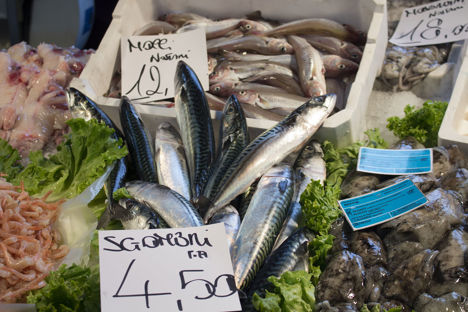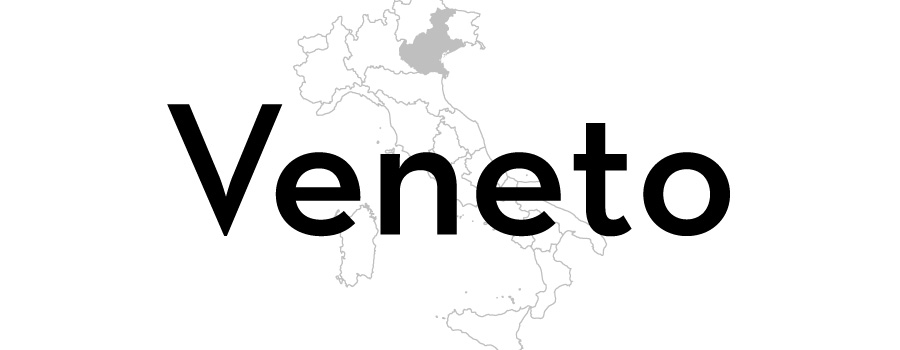
Fish of the Venetian lagoons
Luca Marchiori takes a look at the different fish that make the canals and waterways of Italy’s most beautiful city their home, plus the fish dishes that are enjoyed throughout Venice.
The title of a popular book on sale at the moment declares that Venice is a Fish. This refers to the shape of the city, to which aerial photos will attest. However, this statement could equally apply if it’s true that we are what we eat, for the traditional cuisine of the floating city has a distinctly fishy flavour. This is hardly a surprise, bearing in mind that Venice emerges from the centre of a lagoon on the edge of the Adriatic Sea, both swimming with all sorts of scaly and finned creatures.
What is a surprise however, is that one of the most popular fish featuring in the city’s cuisine comes not from the lagoon but from a remote Norwegian archipelago about 2,500 kilometres from the St Mark’s Square. The reason why baccalà – not salt cod as is commonly thought, but air-dried stockfish – is so popular in Venice is based, literally, on an accident.
In 1432 a Venetian merchant, Pietro Querini, found himself shipwrecked off the Lofoten islands in Norway. While he was waiting for someone to send a Venetian galley to pick him up, he gorged himself on the local dried fish and bought a large quantity of it as emergency rations for the return journey, in case of similar misfortunes. Arriving back in Venice without incident, Querini sold the baccalà on the Rialto and it became an overnight sensation. Ships have been going back and forth to Norway picking up supplies for hungry Venetians ever since.
However, a morning trip to the Rialto fish market will introduce you to the wide variety of fish found zero kilometres away as opposed to 2,500. As well as fish coming from the Atlantic and the Mediterranean, you can find the full range of produce fished out of the Adriatic Sea and the Venetian lagoon itself.
On the side of the old fish market building is a stone inscription which gives the minimum sizes for fish sold at the market. It reads like a Wikipedia entry for local species, most of which have an established position in Venetian cuisine and can still be bought from the adjacent stalls. The names are given in Venetian dialect (as are the ones given below, which is a little different from standard Italian).
The fish and seafood of Venice
Perhaps the two most important local fish are sardele (pilchards) and sardon (anchovies), both found in the lagoon itself. Abundant and traditionally cheap, these form the basis of two Venetian classics; sardele in saor, and bigoli in salsa. The former, fish pickled in a sweet and sour sauce with onions, pine nuts and sultanas, probably has its origins in Roman times as a way of preserving fish. It’s commonly found served as cichéti (small plates) in Venetian bacari (wine bars), one of the best ways to eat in the city. Bigoli in salsa, one of the only true Venetian pasta dishes, consists of spaghetti-like pasta served in a slow-cooked anchovy sauce.
Sardele are often filleted and opened flat, and then fried in breadcrumbs. Again these cotolete di sardele are often found as cichéti in bacari and are delicious with a glass of Friulano wine.
Other fish which can be found as cichéti are folpetti (baby octopus) and peoci (mussels). Vongole (clams) are served with spaghetti in one of the most classic Italian primi (first courses). Capesante (scallops) and gamberi (prawns) are also found, the latter being used as an alternative to sardele in saor.
Seppie (squid) are prized as much for their black ink as they are for their flesh. Risotto al nero di seppia is a stunning dish which looks like it’s been made with black rice and has a delicate, slightly sweet flavour.
In April and May you can find moeche (a kind of soft-shell crab) often cooked in dry white wine. Another highly seasonal find is schie (tiny shrimps) served on foggy winter days on a bed of steaming polenta, providing Venetians with much-needed comfort food. They are much sweeter than larger shrimps and I find it impossible to have enough of them, however large the portion.
Bisati (eels) are a local delicacy and are often served grilled (sulla brace), cooked in a pan with tomatoes, garlic, and parsley (in tecia), or with bay leaves (sull’ara).
Larger fish include branzin (sea bass), orada (gilt-head bream), dental (common dentex) and rombo (sole). These are usually cooked whole in the oven or pan and served simply as a secondo or main course.
Sgombro (mackerel) is one of the most beautiful fish found in the lagoon. Its body is covered with black and steel-blue stripes which catch the light with an iridescence. It is usually eaten filleted in a simple fish stock sauce.
Go (grass goby) is another archetypal fish of the lagoon and is served in a soup (in broeto) or as part of a risotto.
Other fish from further afield, such as pesce spada (swordfish), salmone (salmon) and tonno (tuna) are often found at the market to add variety, as if any was needed.
Even if you are not a fish aficionado, next time you are in Venice it’s worth tracking down these local species and dishes for a real taste of the Serenissima. Eating local produce is good for the environment as well, so you can tuck into your very authentic meal with a clear conscience.

